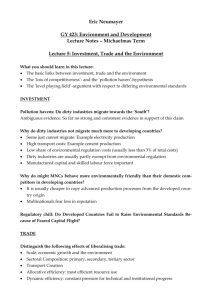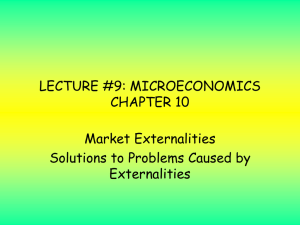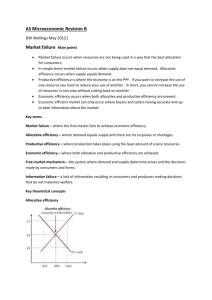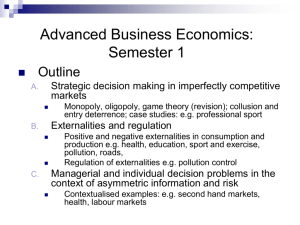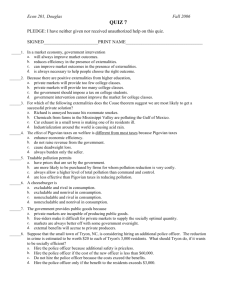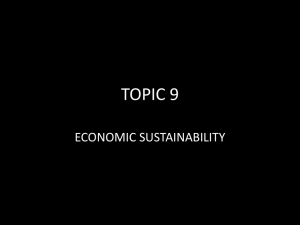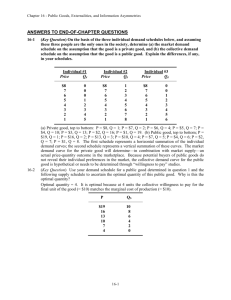Country Paper: Indonesia
advertisement
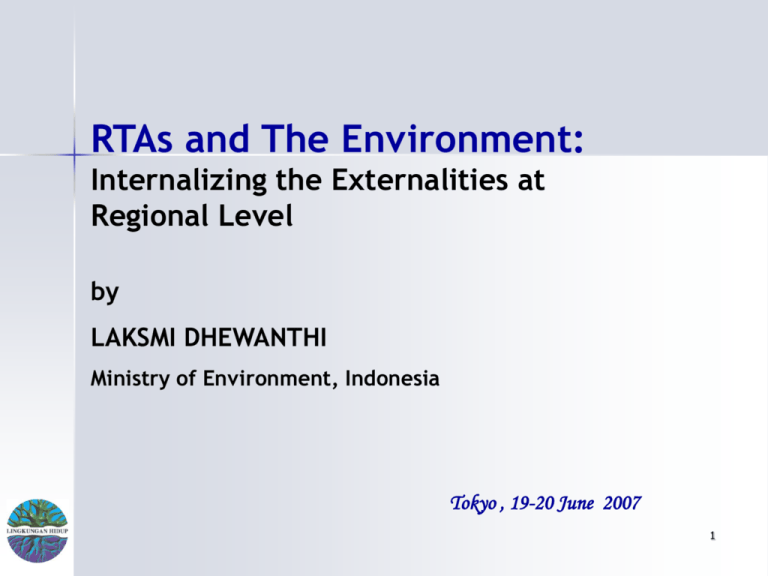
RTAs and The Environment: Internalizing the Externalities at Regional Level by LAKSMI DHEWANTHI Ministry of Environment, Indonesia Tokyo , 19-20 June 2007 1 Key points Background What are the main environmental issues in the region? Can trade internalize the externalities? Efforts at Regional level Closing Remarks 2 Background Trade has the potential to stimulate economic, social and environment. Yet, to ensure that this trade is environmentally sustainable is a major challenge; In this regard, it is necessary to ensure that trade liberalization does not have a negative impact on the environment, and that economic growth is environmentally sustainable; Increase negotiation on and discussion of trade and environmental issues increased the challenges confronting developing countries as they attempt to formulate coherent trade and environment policies. 3 Indonesia Over-exploitation of Natural Resources and Environment in the last 3 decades trade contribute to better natural resources and environment? or Weak environmental management lowering competitive advantage in trade? 4 What are the main environmental issues the region? Rice, pulp and paper, and palm oil are among other key trade commodities, not only for Indonesia, but for most of countries in the ASEAN region ENVIRONMENTAL IMPACTS • • • • • Increase in Land Conversion (land use shifting) Decrease chemical fertilizer/pesticides use Haze pollution Marine pollution Lost of biodiversity 5 Can trade internalize the externalities? Current environmental condition is due to negative externalities of development activities, incl. trade. Isolating the impacts of trade from the impacts of other activities is difficult. Environmental impact is site and time specific, yet it also cumulative in nature ASEAN region: regional environmental impacts and transboundary environmental impacts (haze, marine pollution, etc) by internalising environmental factors/ impacts into trade policy measurements 6 Efforts at regional level No specific references of environmental measurement within RTAs. Yet it has always been aimed at fostering regional peace and stability (incl. environment); Development of testing and certification and development of regional infrastructure; Regional cooperation on R&D, and exchange of information on traditional and environmentally preferable production methods suitable for local condition; 7 Efforts…. (2) Development of regional strategies for improving sustainable trade, including through strengthening south-south trade WG-MEAs, a forum to provide extentisive discuss implementation and development of MEAs Haze pollution, Biodiversity, Climate Change, hazardous waste, POPs, etc 8 ASEAN WG- MEA dialogue among member countries on implementation of MEAs, icl. Conventions: Basel, Rotterdam, Stockholm, Climate Change, etc.; Raise awareness and build the capacity of all stakeholder, i.e. information exchange and dissemination, transfer of knowledge/ technology, training/workshop, and incentive/financing mechanism. 9 Benefits Having regional efforts allow country to address, both, regional and transboundary environmental impact; Reducing negative impacts by internalizing the externalities into regional policy framework accelerating internal/ national environmental policy processes; Enhancing MEAs implementation, especially through joint efforts, capacity building, financing mechanism, dll. 10 Closing remarks Trade relating to Environment Issues is only one side of the coin, in order to achieve and to ensure a “winwin-win” situation it is need to internalizing environmental impacts into policy making process at all levels; MEAs as a multilateral poicy framework could be support by regional comittment and efforts. Regional efforts on internalizing the externalities would able to address environmental impacts resulting from trade. Yet the capacity building and technical assistance must result into reasonable costs. 11 Thank you 12

